Author: Jonathan Ping
Go to Source
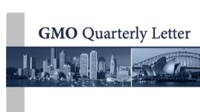 The GMO quarterly letter is on my recurring “must read” list, and the 2021 Q3 letter “Winners, Losers, and the Case for Owning Each” did not disappoint, including some very interesting data for the DIY investor that wants to stay informed. Here are my takeaways and notes:
The GMO quarterly letter is on my recurring “must read” list, and the 2021 Q3 letter “Winners, Losers, and the Case for Owning Each” did not disappoint, including some very interesting data for the DIY investor that wants to stay informed. Here are my takeaways and notes:
For bonds, their starting yield tracks very closely to resulting return. 10-year Treasury rate is 2%, so the 10-year future performance for Treasuries will likely be very close to 2%. Plan accordingly. I choose to invest in short-term and intermediate-term bonds (effective duration 5 years or less).
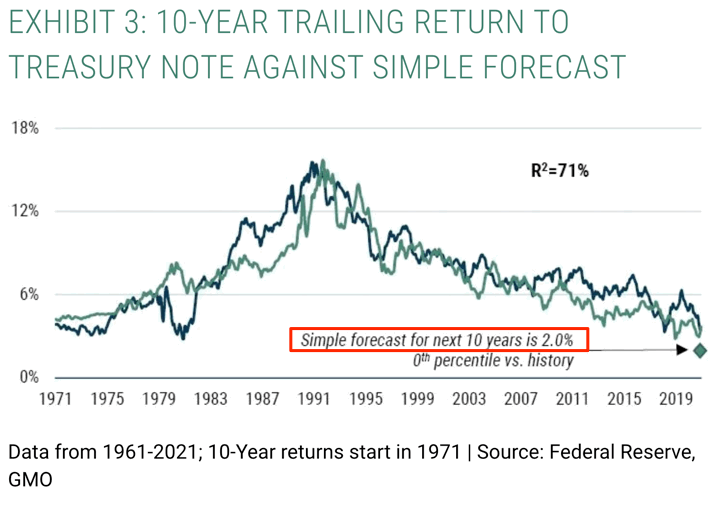
Valuations aren’t everything, but they are an important component. Total return = fundamental return + change in P/E ratio. If you compare the two decades 2001-2011 and 2011-2021, one is referred to as a “lost decade” while the other was one of the longest bull runs in history. However, the growth and reinvestment of earnings was actually about the same. The main difference was the change in P/E ratios (see chart below). Looking ahead, this means that US companies could still be growing profits, but if the P/E ratios drop even just a little, the total return could be quite poor.
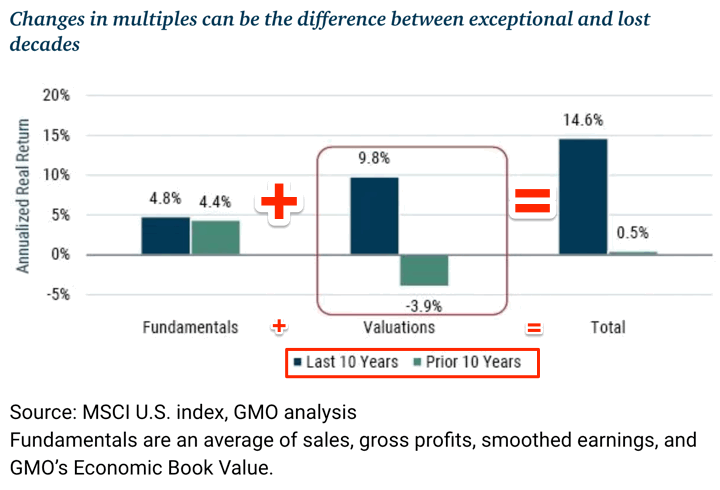
The P/E ratios for US stocks overall is still much higher than for international stocks. The gap is pretty significant.
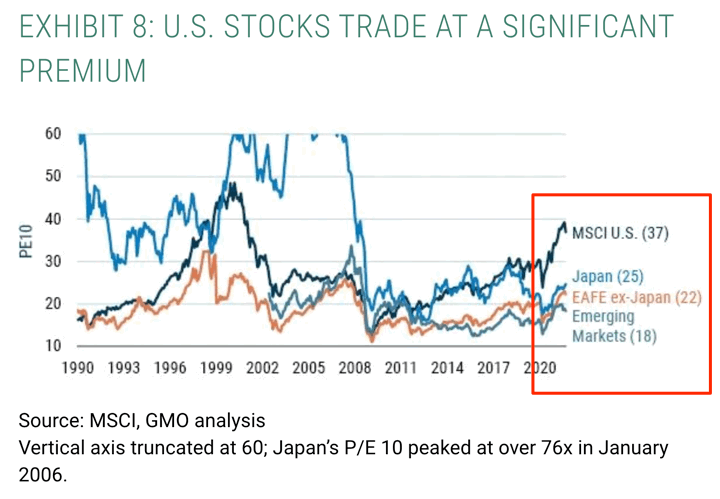
GMO concludes that their is a strong case for having a significant allocation to non-US stocks. GMO shares how they actively adjust the asset allocation for the billions that they manage for large institutions based on this data. I haven’t seen them publicly share this information before now.
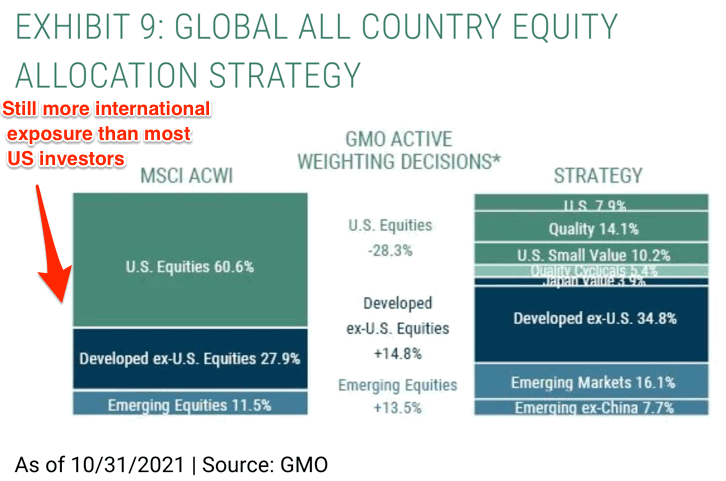
The unsaid part: GMO has been saying this type of thing for many years, and the overall US stock market has just kept outperforming non-US stocks. How long will this keeping going? I choose to admit that I don’t know. In this regard, I don’t bet on either momentum (things going in one direction keep going in that direction) or reversion to the mean (things will eventually go back towards long-term averages).
I call my low-cost, index fund portfolio my “humble portfolio” because it doesn’t require genius on my part. I simply track the passive global weighting on the left (60% US, 40% International currently). If US stocks continue to beat International stocks forever, then one day the world weighting will simply be 80% US or 90% or whatever, and that’s what I’ll own. If things revert back, then it might be 50% US or even 40%, and that’s what I’ll own. Again, by accomplishing this at rock-bottom costs and not paying “helpers” for their guesses (who charge their fees regardless of whether they are right), I guarantee myself above-average results.
Just like buying all the companies within the US, I am buying all the companies of the world. I am invested in well-known, important international names like Taiwan Semiconductor, Nestle (brands), Unilever (brands), Shopify, Samsung, and Diageo (brands). When someone buys Gerber baby food, Hellman’s mayo, or Guinness beer, or even support a local small business (Shopify), a tiny portion of that purchase lands in my brokerage account.
“The editorial content here is not provided by any of the companies mentioned, and has not been reviewed, approved or otherwise endorsed by any of these entities. Opinions expressed here are the author’s alone. This email may contain links through which we are compensated when you click on or are approved for offers.”
GMO: The Case For Investing in Non-US Stocks (Even Though Recent Performance Is Poor) from My Money Blog.
Copyright © 2004-2021 MyMoneyBlog.com. All Rights Reserved. Do not re-syndicate without permission.